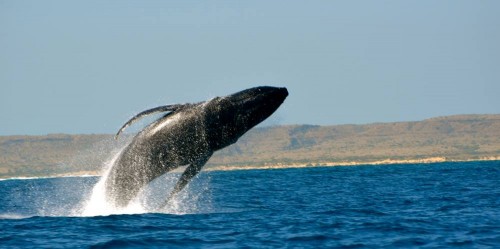Fun Wheels Pty Ltd
Fun Wheels Pty Ltd are the premium dealer in Australasia for the Dutch company BERG’s commercial and domestic products. Our flagship product is their revolutionary pedal go-kart – the…
read more
16th May 2018 - Rising humpback population prompts early start for whale-watching season
17th April 2017 - No opening date in sight for Ningaloo Centre and Aquarium
8th September 2016 - Researchers call for tighter controls on Ningaloo Reef manta ray experiences
18th August 2016 - Swimming with humpbacks begins at Ningaloo Reef
8th December 2015 - Sal Salis given license to swim with humpbacks at Ningaloo Reef
3rd November 2015 - Swimming with humpback whales to be trialled at Ningaloo Marine Park
27th June 2014 - New marine experience offers chance to swim with Humpback Whales
4th July 2011 - Western Australian Government welcomes Ningaloo Coast’s World Heritage listing
Support our industry news service
We hope that you value the news that we publish so while you're here can we ask for your support?
As an independent publisher, we need reader support for our industry news gathering so ask that - if you don't already do so - you back us by subscribing to the printed Australasian Leisure Management magazine and/or our online news.
Click here to view our subscription options.
The Complete Guide to Leisure Industry Products & Services.
Fun Wheels Pty Ltd are the premium dealer in Australasia for the Dutch company BERG’s commercial and domestic products. Our flagship product is their revolutionary pedal go-kart – the…
read moreiDwala is the Community Sports Facility Specialist offering the highest quality designs and technical expertise to Councils, Schools and Sporting Clubs looking to create sporting…
read morePico Play is a global leader in the planning, design, development and construction of world-class themed attractions and entertainment that deliver extraordinary and memorable experiences to millions…
read moreCentaman has been a market leader in Enterprise Software Solutions for the leisure and recreation industry and both profit and not-for-profit attractions since 1991. It offers a wide range of software…
read moreLinks Modular Solutions are a leading provider of high-quality, innovative software solutions for leisure facilities. Our software suite includes modules such as POS, Classes, Members, Facility…
read moreGladstone Health & Leisure (Gladstone MRM Pty Ltd Australia) is a leading supplier of leisure management and fitness software and is endorsed by leading health and fitness professionals and…
read moreINTRODUCTION Abel Sports is Australia’s leading manufacturer and suppliers of Goal Posts, sports ground safety netting systems and coaches boxes for Stadiums ,Sports Clubs, Councils and…
read moreGet your business noticed in our targeted directory. Viewed by 10,000 industry professionals per week!